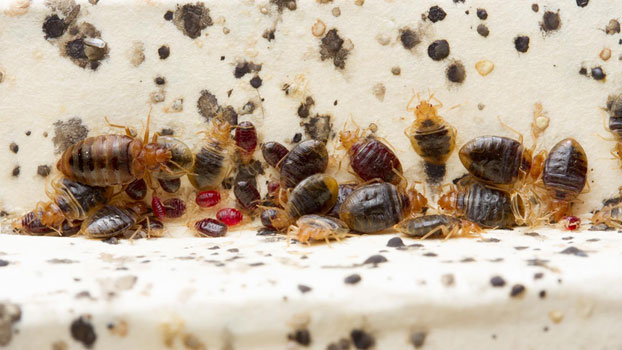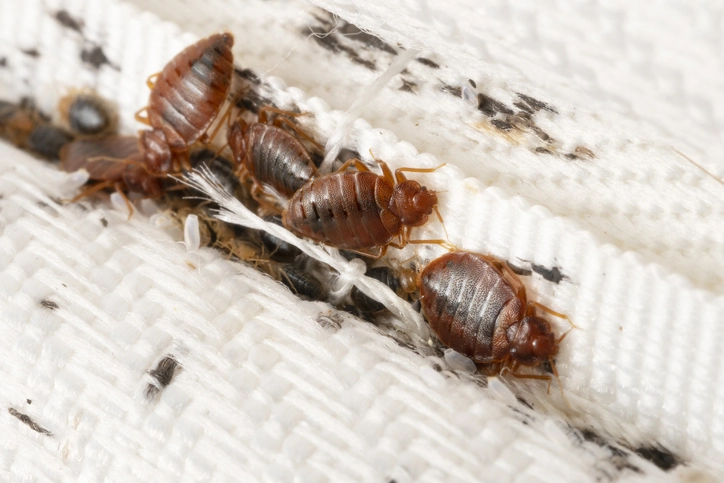Trusted A1 Bed Bug Treatment Houston - Proven Techniques
Trusted A1 Bed Bug Treatment Houston - Proven Techniques
Blog Article
Recognizing the Lifecycle of Parasites for Targeted Control Techniques
Comprehending the lifecycle of parasites is a basic aspect of effective pest monitoring techniques. By comprehending the numerous stages of growth that bugs undertake, an extra specific and targeted technique can be taken on to control their populations. This expertise not just sheds light on the vulnerabilities within the parasite lifecycle yet also leads the way for carrying out calculated actions that can interrupt their development and reproduction cycles. Through a much deeper understanding of how insects advance and prosper, tailored control methods can be created to address details factors in their lifecycle, ultimately causing even more effective bug monitoring end results.
Importance of Recognizing Parasite Lifecycle
Understanding the lifecycle of pests is crucial for developing effective and targeted control techniques in bug administration. By understanding the different stages a parasite goes through from egg to adult, pest control professionals can recognize at risk factors in the lifecycle where intervention can be most effective.
Furthermore, recognizing the particular environmental conditions necessary for every stage of the bug's lifecycle can direct decisions on habitat alteration or exclusion techniques to reduce and interrupt the lifecycle pest populaces. This understanding allows pest administration professionals to apply positive procedures instead of counting exclusively on responsive therapies, resulting in more lasting and lasting bug control options. Inevitably, a complete understanding of parasite lifecycles equips insect control professionals to customize their approaches efficiently, making best use of and reducing ecological impacts control end results.
Trick Stages in Bug Development
To effectively implement targeted control approaches in bug monitoring, a critical aspect exists in comprehensively determining and comprehending the essential phases in insect development. Parasite advancement typically consists of several key stages that are essential for their lifecycle and administration.

Susceptabilities in Bug Lifecycle
Throughout the numerous phases of a pest's lifecycle, distinct susceptabilities arise that can be tactically targeted for efficient control procedures (A1 bed bug removal houston). One essential vulnerability lies in the egg stage, where pests are often more vulnerable to particular insecticides or organic control navigate to this site agents due to their soft external shell, making them simpler targets for intervention. Understanding these susceptabilities in the pest lifecycle is important for developing efficient and accurate control methods that effectively manage insect populations while lessening environmental impact.
Applying Targeted Control Measures

Implementing targeted control steps commonly involves a multi-faceted method. This might include environment alteration to make the environment less welcoming to pests, such as getting rid of standing water for insect control or securing entry points for rats. Furthermore, biological control approaches can be made use of, where natural killers or pathogens are introduced to maintain bug populations in check.
Chemical control, such as the mindful application of chemicals, is another common strategy. Nevertheless, it is vital to use these materials carefully to decrease environmental impact and prospective injury to non-target species. Integrated Insect Monitoring (IPM) strategies that integrate numerous control actions in a worked with and sustainable way are frequently one of the most effective in achieving lasting bug management goals. By applying targeted control procedures based on a visit this site right here comprehensive understanding of pest lifecycles, parasite populations can be efficiently regulated while reducing dangers to human wellness and the setting.
Improved Pest Management Practices

Furthermore, the consolidation of organic control agents, such as all-natural predators or microorganisms of parasites, can help reduce dependence on chemical pesticides and advertise a much more well balanced environment. Carrying out physical barriers and traps can additionally become part of enhanced bug monitoring techniques, offering safe and targeted solutions for pest control. Additionally, the use of pheromones and various other semiochemicals can disrupt pest breeding patterns and interaction, resulting in decreased insect populaces in time.
Conclusion
By determining crucial stages in pest advancement and susceptabilities in their lifecycle, targeted control actions can be applied to decrease pest populaces. Enhanced insect management techniques can help reduce the dependence on broad-spectrum chemicals and promote more ecologically pleasant check here and lasting insect control approaches.
Comprehending the lifecycle of pests is necessary for establishing efficient and targeted control methods in pest monitoring. By understanding the different phases a parasite goes via from egg to grownup, parasite control professionals can determine prone points in the lifecycle where intervention can be most effective. Eventually, a detailed understanding of pest lifecycles empowers insect control professionals to customize their strategies successfully, minimizing ecological impacts and taking full advantage of control outcomes.
By carrying out targeted control steps based on an extensive understanding of insect lifecycles, insect populaces can be properly regulated while reducing risks to human wellness and the environment.
By recognizing essential phases in insect advancement and vulnerabilities in their lifecycle, targeted control steps can be implemented to minimize parasite populaces.
Report this page